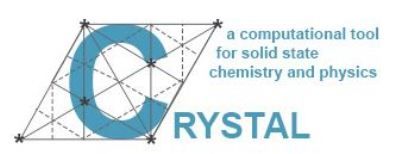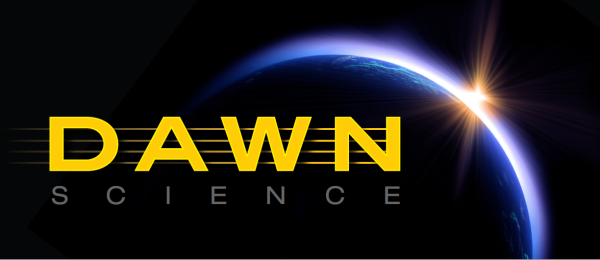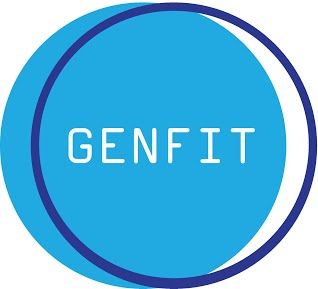Software

ABINIT
ABINIT is a suite of programs for materials science, which implements density functional theory, using a plane wave basis set and pseudopotentials, to compute the electronic density and derived properties of materials ranging from molecules to surfaces to solids. It implements density functional theory by solving the Kohn–Sham equations describing the electrons in a material, expanded in a plane wave basis set and using a self-consistent conjugate gradient method to determine the energy minimum. Computational efficiency is achieved through the use of fast Fourier transforms, and pseudopotentials to describe core electrons. As an alternative to standard norm-conserving pseudopotentials, the projector augmented-wave method may be used. In addition to total energy, forces and stresses are also calculated so that geometry optimizations and ab initio molecular dynamics may be carried out. Materials that can be treated by ABINIT include insulators, metals, and magnetically ordered systems including Mott-Hubbard insulators.

ARCIMBOLDO
Ab Initio macromolecular phasing has been traditionally limited to small proteins at atomic resolution (1.2Å or better unless heavy atoms are present). ARCIMBOLDO constitutes a general method for 2Å data, based on combination of location of model fragments like small ?-helices with PHASER and density modification with SHELXE, distributed over a grid of computers.

ATSAS
ATSAS is a program suite for small-angle scattering data analysis from biological macromolecules. It includes multiplatform data manipulation and displays tools, programs for automated data processing and calculation of overall parameters, usage of high- and low-resolution models from other structural methods, algorithms to build three-dimensional models from weakly interacting oligomeric systems and complexes, and enhanced tools to analyse data from mixtures and flexible systems.

CONUSS
The CONUSS software package provides evaluation methods for data obtained by nuclear resonant scattering techniques. It is used for the interpretation of time or energy spectra from coherent elastic nuclear resonant scattering, i.e., forward scattering and Bragg/Laue scattering,

CRYSTAL
Computational tool for solid state physics and chemistry. The CRYSTAL package performs ab initio calculations of the ground state energy, energy gradient, electronic wave function and properties of periodic systems. Hartree-Fock or Kohn- Sham Hamiltonians (adopting an Exchange-Correlation potential following the DFT postulates of ) can be used. Systems periodic in 0 (molecules, 0D), 1 (polymers, 1D), 2 (slabs, 2D), and 3 dimensions (crystals, 3D) are treated on an equal footing. In each case the fundamental approximation made is the expansion of the single particle wave functions ('Crystalline Orbital', CO) as a linear combination of Bloch functions (BF) defined in terms of local functions, i.e. Atomic Orbitals.

DAWN
DAWN, the Data Analysis WorkbeNch, is an Eclipse based application for scientific data analysis. It comes with a range of tools for visualization (1D, 2D and 3D), code development environments (for Python, Jython and Eclipse plug-ins) as well as processing workflows with visual algorithms for analyzing scientific datasets. It is primarily developed at Diamond Light Source, but external contributions are most welcome! DAWN is distributed freely and is released under the Eclipse Public License.

Demeter
Demeter is a comprehensive system for processing and analyzing X-ray Absorption Spectroscopy data. It contains several packages such as Athena, Artemis and Hephaestus, which are widely used in the XAFS community.
DL_EXCURV (formerly EXCURVE)
Data analysis of EXAFS spectra using the fast spherical wave method. It provides an integrated environment for the analysis of EXAFS spectra while delivering a platform for the fast spherical wave method. The current version is based on this method for single scattering, but uses the method of Lee and Pendry (1975) for the exact polarisation dependent theory. Multiple scattering has options to use several methods. It allows fitting of both background-subtracted, and normalised total absorbance spectra. In the latter case the program calculates the atomic contribution of the spectrum (whole-spectrum fitting). The purpose of the program is to find a structural model of a material which agrees with the available XAFS spectra. This program (without GUI) was formerly called EXCURVE and is the one installed at the ESRF
DL_POLY
DL_POLY is a general purpose classical molecular dynamics (MD) simulation software. It is a package of subroutines, programs and data files, designed to facilitate molecular dynamics simulations of macromolecules, polymers, ionic systems and solutions on a distributed memory parallel computer.
FDMNES
The aim of the FDMNES project is to supply to the community a user friendly code to simulate x-ray spectroscopies, linked to the real absorption (XANES, XMCD) or resonant scattering (RXD) of the synchrotron radiation. This ab initio approach, wants to eliminate all the methodological parameters. First mainly mono-electronic, using the functionnal density theory (DFT), it includes now multi-electronics advances with the use of the time dependant DFT (TD-DFT) for a better taking into account of the excited states linked to the photon-matter interaction. It includes also the Hubbard correction (LDA+U) for a better description of the so called correlated materials.

FEFF9
Condensed matter code for modelling x-ray and electron spectroscopies and materials properties. FEFF is an automated program for ab initio multiple scattering calculations of X-ray Absorption Fine Structure (XAFS), X-ray Absorption Near-Edge Structure (XANES) and various other spectra for clusters of atoms. The code yields scattering amplitudes and phases used in many modern XAFS analysis codes, as well as various other properties. in FEFF9 there are several new spectroscopies which can be calculated with FEFF 9, including electron energy loss spectra (EELS) and non-resonant inelastic x-ray scattering (NRIXS). In addition, there are a variety of improvements. These include; (1) ab initio Debye-Waller factors; (2) improved treatment of inelastic losses; (3) an improved treatment of the core-hole interaction; and (4) more accurate treatment of crystalline systems with k-space calculation of the Green's function. FEFF9 comes with the JFEFF GUI.

FIT2D
FIT2D is a general purpose 1 and 2 dimensional data analysis program. It is used for both interactive and "batch" data processing, and is used for different purposes. Calibration and correction of detector distortions is one of the main uses of FIT2D. Difficult data analysis problems may be tackled using fitting of user specified models. To enable model fitting to be performed on a wide variety of input data, many other more basic data analysis operations are also available. A wide variety of performant graphical display methods are available.

FLUKA
FLUKA is a fully integrated particle physics MonteCarlo simulation package from CERN and INFN. It has many applications in high energy experimental physics and engineering, shielding, detector and telescope design, cosmic ray studies, dosimetry, medical physics and radio-biology. It is used for radiation shielding simulations in the safety group.
GDFIDL
GdfidL computes electromagnetic Fields in 3D-Structures using parallel or scalar Computer Systems. GdfidL computes Resonant Fields in lossfree or lossy Structures and Time dependent Fields in lossfree or lossy Structures. The Fields may be excited by Port Modes or relativistic Line Charges. The Postprocessor computes from these Fields eg. Scattering Parameters, Wake Potentials, Q-Values and Shunt Impedances.

GENFIT (and SASMOL)
GENFIT is a software tool for analysing small-angle scattering (SAS) data from X-ray (SAXS) or neutron (SANS) experiments. It reads in a set of one-dimensional scattering curves and fits them using different kinds of models. SAS curves calculated from a model can be smeared to allow for the instrumental resolution. The user can fit the experimental data selecting one or more models from a list including more than 30 models, starting from simple asymptotic behaviours (Guinier's law, Porod's law, etc.) down to complete atomic structures. Some models, which are defined in terms of both form and structure factors, take into account the interactions between particles in solution. GENFIT is able to simultaneously fit more SAS curves via a unique model or a mixture of models. In the latter case, some specific model parameters can be shared by any selection of the experimental curves. Model parameters can be related to the experimental chemical-physical conditions (temperature, pressure, concentration, pH, etc.) by means of link functions, which can be freely defined by the user. On the other hand, GENFIT can be used to generate theoretical SAS curves from a given model and/or from the knowledge of the species in solution. It can hence be a useful instrument to find the optimum experimental conditions for a planned SAS experiment. GENFIT is written in Fortran. Versions 2.0 and higher make use of a graphical user interface (GUI) to manage input files and execute the calculations.

